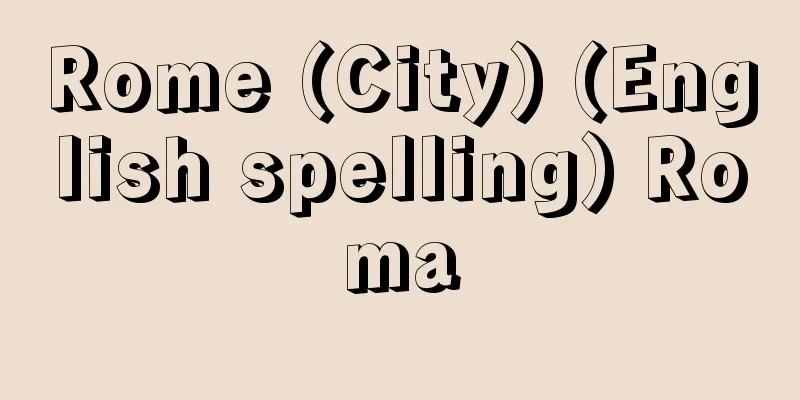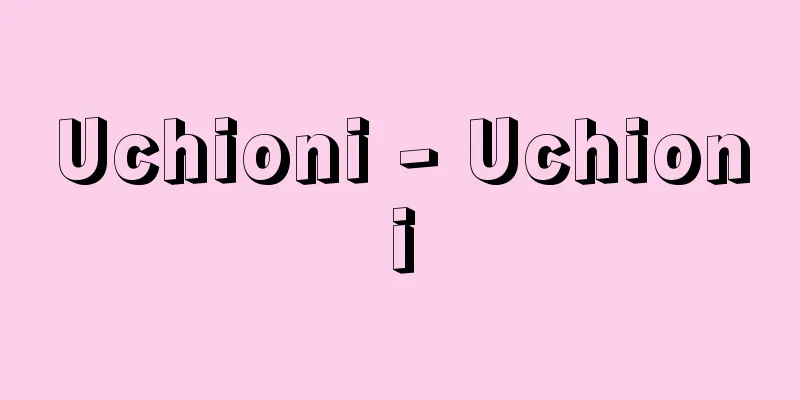Waseda Literature

|
A literary magazine. It was first published as a forum for "out-of-school education" at Tokyo Senmon Gakko (now Waseda University), and the ninth issue was published in 1997 (Heisei 9). [Natsumi Tanaka] First1891-1898 (Meiji 24-31). Monthly. Editor: Tsubouchi Yuzo (Shoyo). Originally published by Tokyo Senmon Gakko, but from issue 49, by Waseda Bungakusha. The magazine was a lecture record of the Literature Department, which had been established at Tokyo Senmon Gakko the previous year, but it soon adopted a "realistic" approach and became distinctive with its "Current Literature Review" column, which reported on the literary situation at the time, and its "Ihou" column, which summarized the trends in the literary world. Shoyo's "Debate on Unidealized Matters," which he fought against Mori Ogai, was published in the magazine. Furthermore, graduates of the Literature Department, such as Kaneko Chikusui, Mizutani Futō (1858-1943), Shimamura Hogetsu, Goto Chugai, and Igarashi Chikara, began to appear in the magazine, strengthening its character as a literary magazine. Other contributors include Takayama Chogyu and Tsunajima Ryosen. [Natsumi Tanaka] Second1906-1927 (Meiji 39-Showa 2). Editor: Shimamura Hogetsu. Edited by Waseda Bungakusha. Published by Kaneo Bun'endo, later Tokyodo. Soma Gyofu and others were active around Shimamura Hogetsu, who had recently returned to Japan. The magazine was at the center of the naturalist literary movement of the time. The pages of the magazine were divided into the "Main column" and the "Iho" (Flashback). The "Main column" contained theories on naturalism by Hogetsu, Soma Gyofu, Katagami Noburu (pen name Tengen), and others, novels by Masamune Hakucho, Tayama Katai, and others, while the "Iho" column contained information across a wide range of fields including literature, education, art, religion, and theater. As a general literary magazine that also made an effort to introduce new literature from overseas, it occupied a major role in the Meiji literary world after the Russo-Japanese War. In the Taisho period, the school produced such writers as Seiji Tanizaki, Kazuo Hirotsu, Koji Uno, Zenzo Kasai, and Konosuke Hinatsu. The editors were Soma Gofu, Nakamura Seiko, and then Homma Hisao, and the school produced many Waseda-affiliated writers, but gradually lost its leadership in the literary world. [Natsumi Tanaka] Third1934-1949 (Showa 9-24). The original editor and publisher was Inoue Eizo (1902-1947). Published by Waseda Bungakusha. Edited mainly by Tanizaki Seiji. Republished around 1935 during the so-called "Literary Renaissance." Contributors were drawn from a wide range of sources, not just those affiliated with Waseda University, including Niwa Fumio, Ozaki Kazuo, Ibuse Masuji, Tonomura Shigeru, Ito Sei, Umezaki Haruo, and Sakaguchi Ango, and the magazine maintained a slight appearance of liberalism amid the trend of pandering to the times before and during the war. [Natsumi Tanaka] Fourth1949 (Showa 24). Editorial committee members: Yagi Yoshinori, Ishikawa Toshimitsu (1914-2001), and others. Edited by Waseda Bungakusha. Masamune Hakucho, Niwa Fumio, Ishikawa Tatsuzo, and others contributed, but only four volumes were published. [Natsumi Tanaka] Fifth1951-1953 (Showa 26-28). Editor and publisher Iwaki Junjiro. Edited by Waseda Bungakusha. Published by Sekkeisha. Seiji Tanizaki was at the center of the editorial committee, which included Asami Fukashi, Shinjo Yoshiaki, and Teruoka Yasutaka (1908-2001). [Natsumi Tanaka] Sixth1959 (Showa 34). Editor: Tsuneo Iwamoto (1918-1990). Edited by Fumio Niwa, Tatsuzo Ishikawa, and Ashihei Hino. Ended with 8 volumes. [Natsumi Tanaka] Seventh1969-1975 (Showa 44-50). Editor and publisher: Shinjo Yoshiaki. Published by Waseda Literature Association. Published by Kodansha. Initially, editor-in-chief Tachihara Masaaki was in charge of editing, along with Arima Yorichika, but eventually the editorial committee adopted a joint editing system. Written by Goto Meisei, Takai Yuichi, Miura Tetsuo, Akiyama Shun (1930-2013), Tatematsu Wahei and others. Publication ceased due to the wave of inflation following the first oil crisis. [Natsumi Tanaka] EighthPublished by the Waseda Literary Society from 1976 to 1997. Publisher: Hiraoka Tokuyoshi (1929-2005). Initially it had an editorial committee, with Akiyama Shun, Goto Akio, Miura Tetsuro and others serving on the editorial committee, later Miyahara Akio (1932-), Tatematsu Wahei, Mita Masahiro (1948-), Murakami Haruki, Nakagami Kenji, Aono So and Suzuki Sadayoshi (1947-), but the editorial committee system was later abolished. Initially it was published in the style of a B5 weekly magazine. Published works include Murakami Haruki's "Bakery Raid" (1981) and Kato Norihiro's "America's Shadow" (1982), among others. [Natsumi Tanaka] NinthFrom 1997 (Heisei 9). Changed from monthly to bimonthly. Publisher: Nishimoto Takehiko (1941-), Editor: Enaka Naoki (1949-). Later, Publisher: Yoshida Junichi (1940-), Ohashi Katsuaki (1942-), Editor: Kaizawa Hajime (1963-), etc. Editorial staff included Mita Masahiro and others. In 2001, the magazine was revamped to focus on literary criticism. [Natsumi Tanaka] "Historical Biography of Waseda Literature" by Asami Fuchi (1974, Shinchosha)" ▽ "Complete Catalog of Waseda Literature (1st Edition)" (1979, Daiichi Shobo)" ▽ "Waseda Literature Biography" edited by Yasumasa Masao and Kuritsubo Yoshiki (1981, Seieisha)" ▽ "A Century of Waseda and Literature - Catalog Commemorating the 100th Anniversary of the Publication of Waseda Bungaku" (1991), compiled and published by Waseda University Library" ▽ "Shincho Japanese Literature Album (57) Tsubouchi Shoyo" (1996, Shinchosha)" ▽ "Tachihara Masaaki: A Biography of the Style of the Works" by Suzuki Sayoko (Chuko Bunko)" ▽ "Literature of Recollection: History of the Japanese Literary World (9) New Literature after the Russo-Japanese War" by Ito Sei (Kodansha Bunko)" [References] | | | | | | | | Haruo| |Kasai | | |Goto Chugai| | | | | |Soma | Chogyu| | | | | |Tsubouchi Shoyo| | | | | | | | | | |Source: Shogakukan Encyclopedia Nipponica About Encyclopedia Nipponica Information | Legend |
|
文芸雑誌。東京専門学校(現早稲田大学)の「学校外教育」の場として創刊され、1997年(平成9)には第九次が発行されている。 [田中夏美] 第一次1891~1898年(明治24~31)。月刊。編集者坪内雄蔵(ゆうぞう)(逍遙(しょうよう))。発行所、当初東京専門学校、49号より早稲田文学社。東京専門学校に前年創設の文学科の講義録的なものに、やがて「記実主義」の方針を打ち出して、当時の文学状況を伝える「時文評論」や、文学界の動向を概括した「彙報(いほう)」欄に特色をみせるようになった。森鴎外との間で戦わされた逍遙の「没理想論争」が掲載されている。さらに文学科卒業生の金子筑水(ちくすい)、水谷不倒(ふとう)(1858―1943)、島村抱月(ほうげつ)、後藤宙外(ちゅうがい)、五十嵐力(ちから)らが誌面で活躍しはじめ、文芸誌としての色彩を強めた。ほかに高山樗牛(ちょぎゅう)、綱島梁川(つなじまりょうせん)などが執筆。 [田中夏美] 第二次1906~1927年(明治39~昭和2)。編集者島村抱月。早稲田文学社編集。発行所、金尾文淵堂、のち東京堂。新帰朝の島村抱月を擁して相馬御風(ぎょふう)らが活躍。おりからの自然主義文学運動の中心的な位置につける。誌面は「本欄」と「彙報」に分けられ、「本欄」には抱月、相馬御風、片上伸(かたかみのぶる)(号は天弦(てんげん))らの自然主義論、正宗白鳥、田山花袋(かたい)らの小説など、「彙報」欄は文学・教育・美術・宗教・演劇など広い分野にわたる情報を載せ、海外の新文学の紹介にも力を入れる総合的文芸誌として、日露戦争後の明治文壇に大きな比重を占めた。大正期に入り谷崎精二、広津和郎、宇野浩二、葛西善蔵、日夏耿之介(こうのすけ)らが輩出。編集は相馬御風、中村星湖を経て本間久雄が担当、早大系の作家を送り出したが、漸次文壇における指導性を失っていった。 [田中夏美] 第三次1934~1949年(昭和9~24)。当初の編集発行人は井上英三(1902―1947)。早稲田文学社発行。谷崎精二が中心になり編集。昭和10年前後のいわゆる「文芸復興」期に復刊。丹羽(にわ)文雄、尾崎一雄、井伏鱒二(いぶせますじ)、外村繁(とのむらしげる)、伊藤整(せい)、梅崎春生(はるお)、坂口安吾など、執筆者は早大関係者に限らず広範囲に求め、また、戦前・戦中の時局迎合の風潮のなかでわずかに自由主義の面目を保った。 [田中夏美] 第四次1949年(昭和24)。編集委員、八木義徳(よしのり)、石川利光(りこう)(1914―2001)ら。早稲田文学社編集。正宗白鳥、丹羽文雄、石川達三らが執筆するが、4冊のみで終わる。 [田中夏美] 第五次1951~1953年(昭和26~28)。編集発行人岩城順二郎。早稲田文学社編集。雪華社発行。谷崎精二が中心になり浅見淵(ふかし)、新庄嘉章(しんじょうよしあきら)、暉峻康隆(てるおかやすたか)(1908―2001)らの編集委員制をとる。 [田中夏美] 第六次1959年(昭和34)。編集人岩本常雄(1918―1990)。丹羽文雄、石川達三、火野葦平(ひのあしへい)の責任編集。8冊で終わる。 [田中夏美] 第七次1969~1975年(昭和44~50)。編集兼発行人新庄嘉章。早稲田文学会発行。講談社発売。当初、編集委員長立原正秋(まさあき)を中心に有馬頼義(よりちか)らが編集にあたるが、やがて編集委員による共同編集制をとる。後藤明生(めいせい)、高井有一、三浦哲郎(てつお)、秋山駿(しゅん)(1930―2013)、立松和平らが執筆。第一次石油危機後のインフレの波を受けて休刊。 [田中夏美] 第八次1976~1997年(昭和51~平成9)。早稲田文学会発行。発行人平岡篤頼(とくよし)(1929―2005)。はじめ編集委員制をとり、秋山駿、後藤明生、三浦哲郎ら、のち宮原昭夫(1932― )、立松和平、三田誠広(1948― )、村上春樹、中上健次、青野聰(そう)、鈴木貞美(1947― )らが編集委員を務めるが、その後編集委員制は廃止。当初B5判の週刊誌スタイルで発行。掲載作品に村上春樹『パン屋襲撃』(1981)、加藤典洋『アメリカの影』(1982)など。 [田中夏美] 第九次1997年(平成9)~。月刊を隔月刊に変更。発行人西本武彦(1941― )、編集人江中直紀(1949― )。のち発行人吉田順一(1940― )、大橋一章(かつあき)(1942― )、編集人貝澤哉(はじめ)(1963― )など。編集室に三田誠広ら。2001年、文芸批評中心に誌面を刷新。 [田中夏美] 『浅見淵著『史伝早稲田文学』(1974・新潮社)』▽『『早稲田文学(第一次)総目録』(1979・第一書房)』▽『保昌正夫・栗坪良樹編『早稲田文学人物誌』(1981・青英社)』▽『早稲田大学図書館編・刊『早稲田と文学の一世紀――「早稲田文学」創刊100年記念図録』(1991)』▽『『新潮日本文学アルバム(57) 坪内逍遙』(1996・新潮社)』▽『鈴木佐代子著『立原正秋 風姿伝』(中公文庫)』▽『伊藤整著『回想の文学 日本文壇史(9) 日露戦後の新文学』(講談社文芸文庫)』 [参照項目] | | | | | | | | | | | | | | | | | | | | | | | | | | | | | | | | | | | | | | | | | |出典 小学館 日本大百科全書(ニッポニカ)日本大百科全書(ニッポニカ)について 情報 | 凡例 |
Recommend
Hub of the Universe
…Blessed with a natural harbor, fishing and shipp...
Kawai Koichi - Kawai Koichi
Musical instrument manufacturing engineer. Born i...
Roggeveen, J.
…It is an isolated island located at 27°08′ south...
Emptiness (Buddhism) - Kuu
...Because this perishes, that perishes." In...
Earl of Bute - Bute
British politician. Born into a Scottish aristocra...
Student - Shosei
〘noun〙① A person who is in the period of completin...
Positional isomerism
[See other terms] Structural isomerism Source: Mo...
Akala - Akara
...It is called Ako or Ako in Osaka Prefecture, W...
Dalbergia melanoxylon (English spelling) Dalbergia melanoxylon
… [Ken Ogata]. . … *Some of the terminology that ...
Furniture Music - Kagu no Ongaku (English) musique d'ameublement
This is the title of a series of pieces conceived ...
Psoriasis - Psoriasis
[What kind of disease is it?] Psoriasis is a chron...
vezir
...Therefore, the ruling class of emirs tended to...
Sakamoto Hanjiro - Sakamoto Hanjiro
Western-style painter. Born in Kurume City on Mar...
Dzheitun (English spelling)
A Neolithic site located about 30km north-northwes...
food segregation
…And two species of herons that live on the same ...









